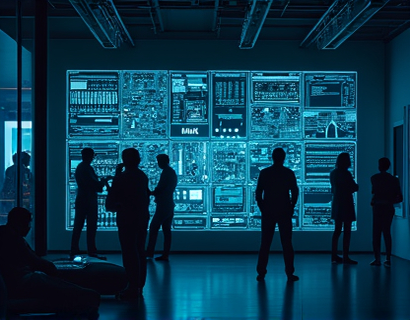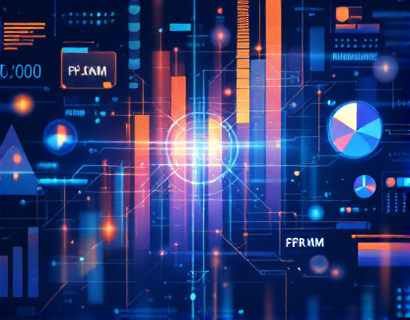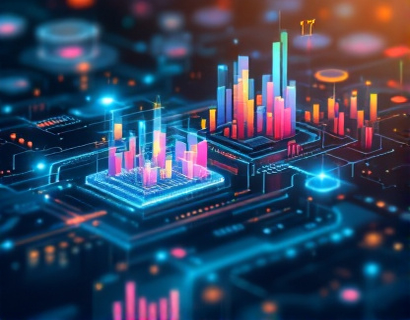Revolutionizing Digital Engagement: The Synergy of Crypto and AI
The integration of blockchain technology and artificial intelligence (AI) is ushering in a new era of digital engagement, transforming the way users interact with technology and each other. This synergy is not just a technological advancement but a paradigm shift that is redefining user experiences and driving growth across various sectors. The convergence of these two powerful forces is creating innovative solutions that enhance security, transparency, and personalization, unlocking new opportunities for tech enthusiasts and early adopters.
The blockchain, often heralded as the backbone of cryptocurrencies, offers a decentralized and immutable ledger that ensures data integrity and security. When combined with AI, which excels in pattern recognition, predictive analytics, and automated decision-making, the potential for creating seamless and secure user experiences becomes immense. This article delves into the intricate ways in which blockchain and AI are collaborating to revolutionize user engagement, focusing on the tech ecosystem and the broader implications for digital interactions.
Enhancing Security through Blockchain and AI
One of the most significant benefits of integrating blockchain and AI is the enhancement of security measures. Blockchain's inherent properties, such as decentralization and cryptographic hashing, provide a robust framework for securing data. AI, with its advanced algorithms, can monitor and analyze blockchain transactions in real-time, detecting anomalies and potential threats with high accuracy. This combination ensures that user data is not only stored securely but also protected from emerging cyber threats.
For instance, AI-driven security systems can predict and prevent fraudulent activities by analyzing patterns and behaviors. These systems can identify suspicious transactions and automatically trigger alerts or block access, minimizing the risk of data breaches. Moreover, AI can enhance the authentication process by using biometric data and behavioral analysis, ensuring that only authorized users access sensitive information. This dual-layer security approach is crucial in building trust and confidence among users, especially in the realm of cryptocurrency and digital assets.
Personalization and User Experience
Personalization is a key driver of user engagement, and the combination of blockchain and AI is revolutionizing how user experiences are tailored. AI algorithms can analyze vast amounts of user data to understand preferences, behaviors, and needs, allowing for highly personalized interactions. Blockchain technology ensures that this data is stored securely and privately, giving users control over their information while enabling seamless sharing with service providers.
For example, in the context of digital content consumption, AI can curate content based on a user's viewing history and preferences. Blockchain can facilitate a transparent and secure system for content creators to receive fair compensation for their work, ensuring that the value generated from user engagement is distributed equitably. This not only enhances the user experience but also fosters a more sustainable and ethical ecosystem.
Decentralized Applications and Smart Contracts
Decentralized applications (dApps) powered by blockchain and AI are redefining the way users interact with digital services. dApps leverage smart contracts, self-executing contracts with the terms directly written into code, to automate and enforce agreements without intermediaries. AI enhances these applications by providing intelligent and adaptive functionalities, making them more efficient and user-friendly.
In the realm of finance, decentralized finance (DeFi) platforms use smart contracts to offer a wide range of financial services, from lending and borrowing to trading and yield farming. AI algorithms can optimize these services by predicting market trends, managing risks, and personalizing investment strategies. This synergy not only reduces costs and increases accessibility but also empowers users with greater control and autonomy over their financial activities.
Enhancing Trust and Transparency
Trust and transparency are fundamental to any digital ecosystem, and the combination of blockchain and AI is setting new standards in this regard. Blockchain's transparent and immutable nature ensures that all transactions and interactions are recorded and verifiable. AI can further enhance this transparency by providing real-time insights and analytics, allowing users to track and understand the flow of data and assets.
For instance, in supply chain management, blockchain can track the movement of goods from origin to destination, while AI can analyze this data to identify bottlenecks, optimize routes, and ensure compliance with regulations. This level of transparency not only builds trust among stakeholders but also improves operational efficiency and reduces costs.
Fostering Innovation and Collaboration
The integration of blockchain and AI is not only transforming individual applications but also fostering a collaborative ecosystem where innovators can thrive. Developers and entrepreneurs have access to a rich ecosystem of tools, platforms, and communities that support the creation and deployment of cutting-edge solutions. This collaborative environment encourages experimentation and innovation, leading to the development of new use cases and applications.
For example, blockchain-based platforms can facilitate the sharing of AI models and datasets, enabling researchers and developers to build upon each other's work. This open-source approach accelerates the pace of innovation and ensures that advancements are accessible to a broader audience. Additionally, AI-powered tools can assist in the development and testing of blockchain applications, streamlining the creation process and reducing barriers to entry.
Challenges and Considerations
While the potential of combining blockchain and AI is vast, there are several challenges and considerations that need to be addressed. Scalability remains a significant issue, as both technologies require substantial computational resources. Ensuring that blockchain networks can handle the increased load generated by AI processes is crucial for widespread adoption. Additionally, regulatory frameworks must evolve to accommodate these new technologies, providing clear guidelines and protections for users and businesses.
Privacy concerns also need to be carefully managed. While blockchain offers transparency, it can also expose sensitive information if not properly managed. AI algorithms must be designed with privacy by design principles, ensuring that user data is protected and used ethically. Balancing these aspects is essential for building a trusted and sustainable ecosystem.
Future Prospects
The future of digital engagement is bright, with the integration of blockchain and AI paving the way for unprecedented levels of security, personalization, and innovation. As these technologies continue to mature, we can expect to see more sophisticated applications across various industries, from healthcare and finance to education and entertainment. The potential for creating immersive and interactive experiences, such as decentralized virtual reality (VR) and augmented reality (AR) platforms, is immense.
Moreover, the convergence of blockchain and AI is likely to give rise to new business models and economic systems, redefining how value is created and distributed. The emphasis on decentralization and user empowerment will continue to drive growth and engagement, making the tech ecosystem more inclusive and resilient.
In conclusion, the synergy of blockchain and AI is revolutionizing user engagement, offering a future where digital interactions are secure, personalized, and empowering. As we navigate this exciting landscape, it is crucial to address the challenges and embrace the opportunities, ensuring that the benefits of these technologies are realized by all.










































